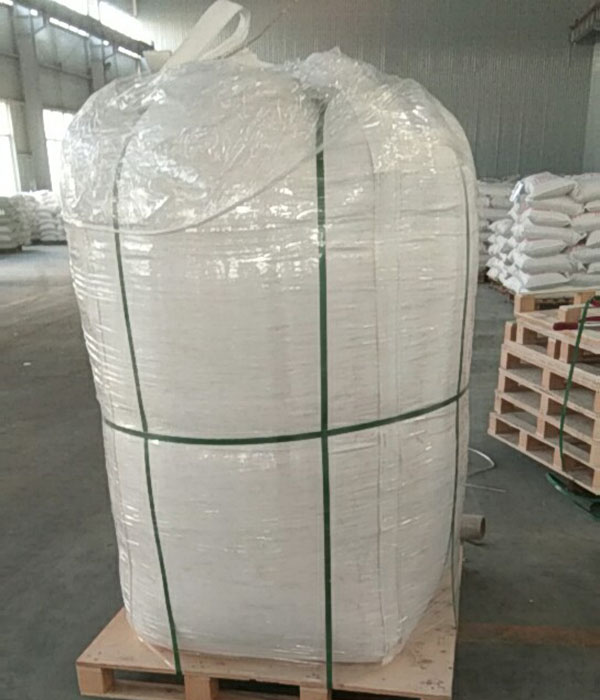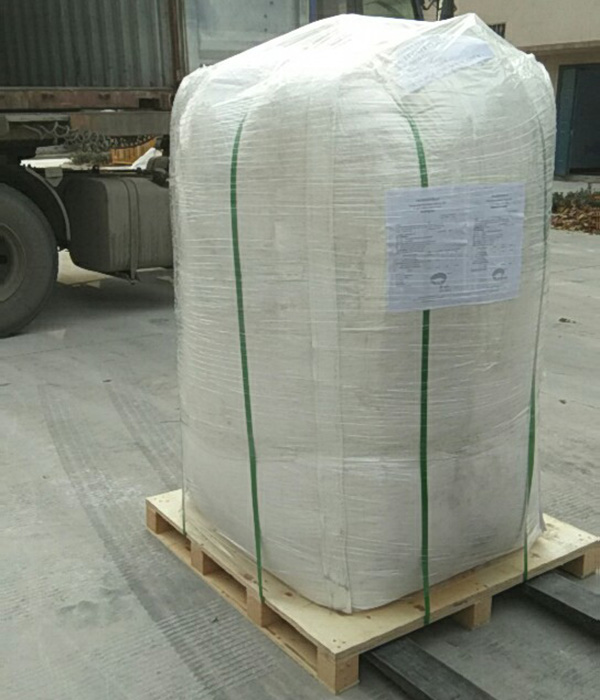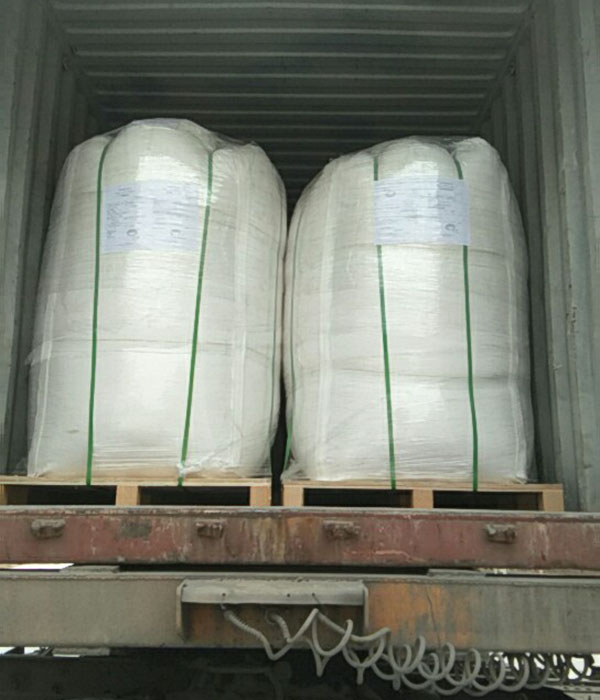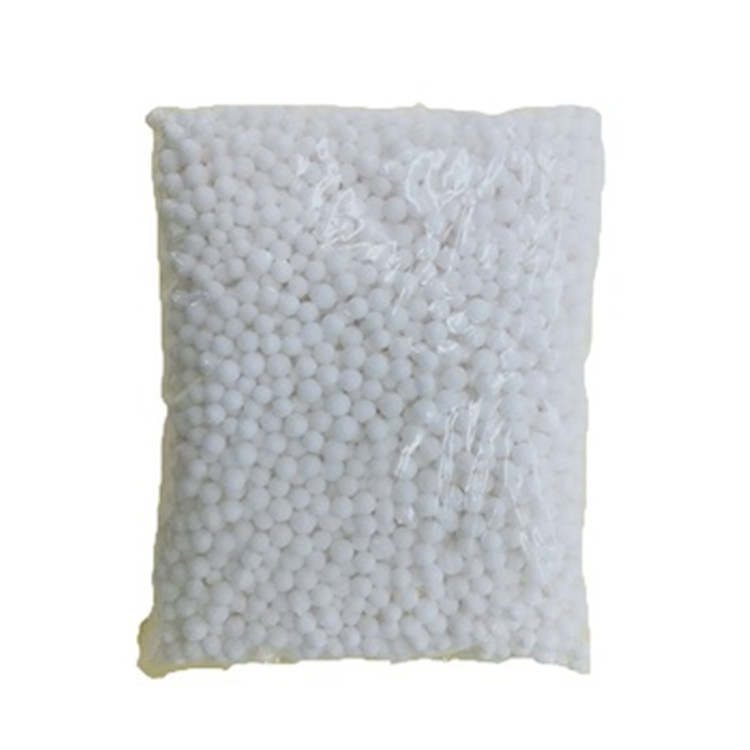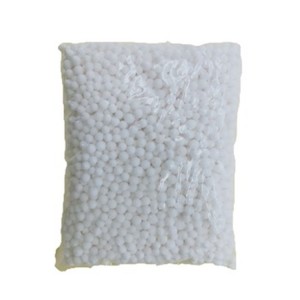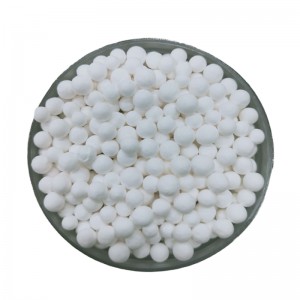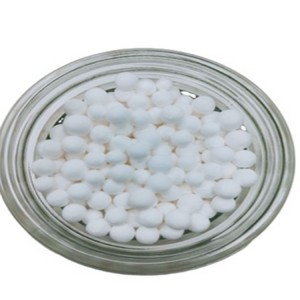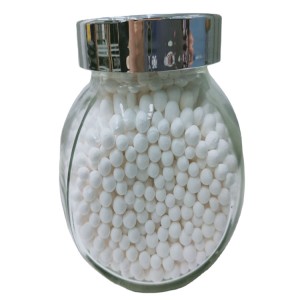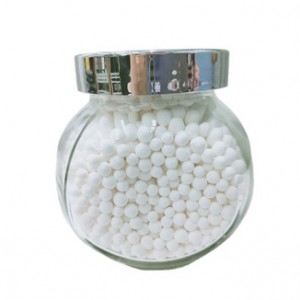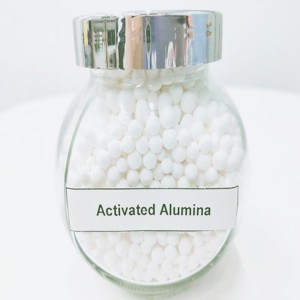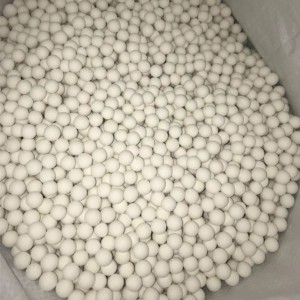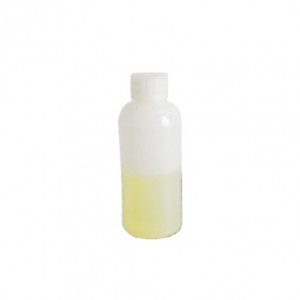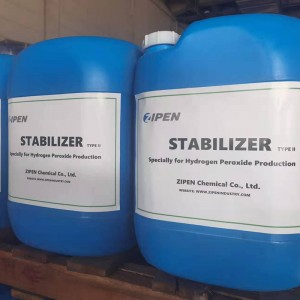Activated Alumina for H2O2 production, CAS#: 1302-74-5, Activated Alumina
Specification
| Item | ||||
| Crystalline phase | r-Al2O3 | r-Al2O3 | r-Al2O3 | r-Al2O3 |
| Appearance | White ball | White ball | White ball | White ball |
| Specific Surface (m2/g) | 200-260 | 200-260 | 200-260 | 200-260 |
| Pore volume(cm3/g) | 0.40-0.46 | 0.40-0.46 | 0.40-0.46 | 0.40-0.46 |
| Water absorption | >52 | >52 | >52 | >52 |
| Particle size | 7-14mesh | 3-5mm | 4-6mm | 5-7mm |
| Bulk density | 0.76-0.85 | 0.65-0.72 | 0.64-0.70 | 0.64-0.68 |
| Strength N/PC | >45 | >70 | >80 | >100 |
Application of activated alumina as adsorbent
This product is used for the regeneration of the degradation products of the working solution in the production of hydrogen peroxide by the anthraquinone process. It is an essential chemical material for the production of hydrogen peroxide. It has less floating powder, low abrasion, large specific surface area and large regeneration capacity, and long service life.
Factors affecting adsorption performance
1. Particle size: The smaller the particle size, the higher the adsorption capacity, but the smaller the particle size, the lower the particle strength, which affects its service life.
2. Raw water pH value: When the pH value is higher than 5, the lower the pH value, the higher the adsorption capacity of activated alumina.
3. Initial fluorine concentration in raw water: the higher the initial fluorine concentration, the larger the adsorption capacity.
4. The alkalinity of the raw water: the high concentration of bicarbonate in the raw water will reduce the adsorption capacity.
5. Chloride ion and sulfate ion.
6. The influence of arsenic: activated alumina has an adsorption effect on arsenic in water. The accumulation of arsenic on activated alumina causes a decrease in the adsorption capacity of fluoride ions, and makes it difficult to elute arsenic ions during regeneration.
Purity: ≥92%
Packing
